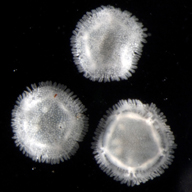Research
Upgrade to OSC Supercomputer Provides More Power for Bio-Sciences Research
For more information, contact:
Leslie Southern
OSC Director of High Performance Computing
614-292-9367
leslie@osc.edu
SuperViz '94 Showcases Excellent Science -- Area HS Students Featured in Supercomputing Video
The Ohio Supercomputer Center (OSC) announces that five science video animations produced at the center were among the 34 selected for the International Supercomputing '94 Conference showcase video, SuperViz '94, as excellent examples of scientific research. With the assistance of OSC staff Tim Rozmajzl, Leslie Southern, and Rob Berry, two of the projects were created by high school students who participated in OSC's 1994 Summer Institute program.
Supercomputer Center, Electroscience Laboratory follow expansions with research collaboration
Last month, the Electroscience Laboratory (ESL) at The Ohio State University celebrated the groundbreaking of a new facility on Kinnear Road that will showcase the center’s unique, cutting-edge research. Just down the street, the Ohio Supercomputer Center (OSC) last summer installed a $4 million expansion to its flagship computing system, providing a huge boost to the state’s research and innovation aspirations.
Darkstrand and Ohio Supercomputer Center join forces for corporate supercomputing access
Darkstrand, a pioneer in corporate high-speed connectivity bridging research and commercialization, today announced a strategic alliance with the Ohio Supercomputer Center in Columbus with the mutual objective of bringing the research and development capabilities of the Center to the national commercial marketplace.
Researchers publish article on tracking infectious disease
A new web-based application powered by supercomputers has the potential to inform public health decisions by visualizing genetic and evolutionary information about the spread of infectious diseases across time, geography, host animals and humans.
LHC research program launched with 7 TeV collisions
Geneva, Switzerland (March 30, 2010) At 1:06 p.m. Central European Summer Time (CEST) today, the first protons collided at 7 TeV in the Large Hadron Collider. These first collisions, recorded by the LHC experiments, mark the start of the LHC’s research program. Animation of the first reconstructed 7 TeV events seen by ALICE can be found on YouTube. For more information about this milestone event and American participation – including involvement by staff members of the Ohio Supercomputer Center, read the press releases below.
Physics Begins at the Large Hadron Collider
Text of the press release issued by Brookhaven National Laboratory and Fermilab:



